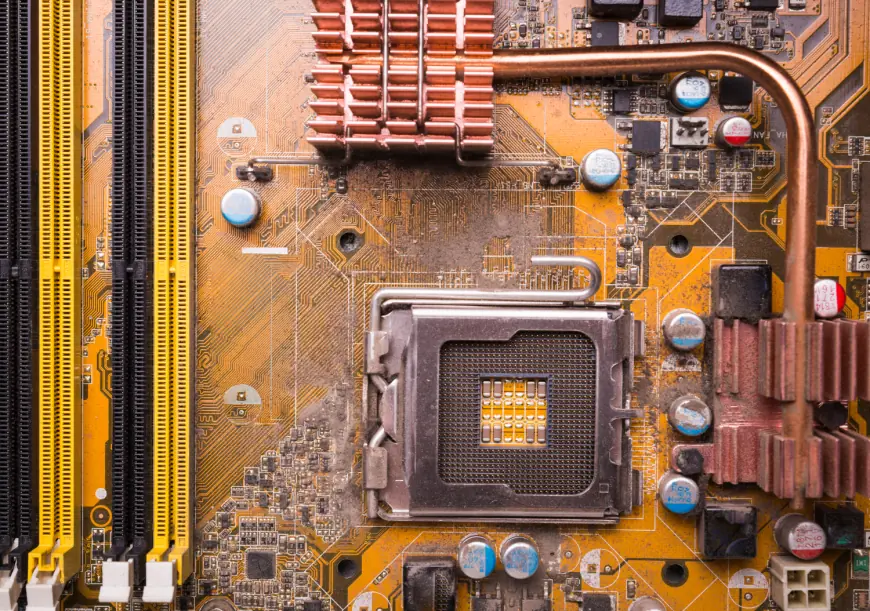How GPU Clusters Are Powering the Future of High-Performance Computing
As AI and data-intensive applications continue to grow, GPU clusters are expected to play an even bigger role in both enterprise and academic computing.

In today's data-driven world, processing speed and computational efficiency are crucial for everything from AI development to scientific simulations. As traditional CPUs struggle to keep pace with modern demands, GPU clusters have emerged as the powerhouse behind high-performance computing (HPC), offering parallel processing at massive scales. But what exactly are GPU clusters, and why are they becoming the go-to infrastructure for compute-heavy tasks? Let’s explore.
What is a GPU Cluster?
A GPU cluster is a group of servers (or nodes) that are each equipped with one or more Graphics Processing Units (GPUs), connected together to work as a single system. Unlike a standard cluster that may rely primarily on CPUs, GPU clusters use the highly parallel architecture of GPUs to handle thousands of threads simultaneously.
While GPUs were originally designed to accelerate graphics rendering, their parallel structure makes them ideal for tasks involving large-scale mathematical computations. Clustering them together multiplies this capacity, enabling breakthroughs in areas like artificial intelligence, data analytics, 3D rendering, and climate modeling.
Key Components of a GPU Cluster
To understand the power behind GPU clusters, it's essential to grasp their core components:
-
Compute Nodes: These are the individual servers that house GPUs and CPUs.
-
Interconnect Network: A high-speed communication fabric that links all nodes for fast data transfer.
-
Shared Storage: Centralized data storage accessible by all nodes, essential for data-heavy workloads.
-
Cluster Management Software: Tools that help orchestrate task scheduling, load balancing, monitoring, and resource allocation.
Together, these components make it possible to execute massive workloads efficiently across multiple GPUs.
Why Are GPU Clusters So Powerful?
The true strength of GPU clusters lies in their ability to handle parallel workloads. Here’s why they outperform traditional computing systems:
-
Massive Parallelism: A single GPU can have thousands of cores, making it vastly superior for parallel tasks compared to CPU-only systems.
-
Speed and Efficiency: GPU clusters can complete certain computations in hours that would take CPU-based systems days or even weeks.
-
Scalability: Need more power? Just add more GPU nodes. Clusters can scale horizontally to match increasing workload demands.
-
Versatility: They support a wide range of applications—from training deep learning models to running financial simulations or performing real-time video analytics.
Real-World Applications of GPU Clusters
1. Artificial Intelligence and Machine Learning
Training deep neural networks involves massive datasets and millions of calculations. GPU clusters accelerate the training process, allowing researchers and developers to iterate faster and improve model accuracy.
2. Scientific Research
From genomics to astrophysics, researchers use GPU clusters for simulation and modeling. For instance, simulating protein folding or predicting weather patterns requires extensive computation that GPU clusters can provide efficiently.
3. Video Rendering and Animation
Studios and content creators leverage GPU clusters for high-resolution rendering, special effects, and animation pipelines that require intense graphical processing in shorter timeframes.
4. Financial Modeling and Risk Analysis
Financial institutions use GPU clusters for high-frequency trading simulations, risk analysis, and complex modeling involving large sets of time-series data.
5. Big Data Analytics
Analyzing terabytes of structured and unstructured data is made possible with GPU clusters that can parallelize query execution and real-time data processing.
Benefits for Enterprises and Developers
-
Reduced Time-to-Market: Faster processing means quicker development cycles and faster product rollouts.
-
Cost-Effectiveness: Although GPUs may seem expensive initially, their efficiency often results in lower operational costs over time.
-
Improved Accuracy: Higher computational power enables more detailed and precise models, leading to better decision-making.
-
Remote Accessibility: Many modern GPU clusters are cloud-based, offering flexibility, remote access, and easier resource management.
Challenges to Consider
While GPU clusters offer numerous advantages, they also come with a few challenges:
-
Resource Management: Efficient scheduling and job allocation are crucial to avoid resource underutilization.
-
Compatibility: Not all software can leverage GPUs effectively; proper configuration and support are necessary.
-
Cooling and Power Needs: GPUs consume more power and generate more heat than CPUs, requiring robust cooling and energy infrastructure.
However, these challenges can be addressed through proper planning, configuration, and the use of smart management tools.
The Future of GPU Clusters
As AI and data-intensive applications continue to grow, GPU clusters are expected to play an even bigger role in both enterprise and academic computing. Advances in multi-GPU communication, memory sharing, and AI-specific optimization will further enhance their capabilities.
Moreover, hybrid environments that combine GPU clusters with other accelerators or edge computing nodes are likely to emerge, making data processing faster, smarter, and more distributed.
Conclusion
GPU clusters are revolutionizing the landscape of high-performance computing. By combining the raw power of multiple GPUs, these systems make it possible to handle complex, data-heavy tasks with greater speed and precision. Whether you're developing advanced AI models, conducting scientific research, or crunching massive data sets, GPU clusters provide the foundation for the next generation of innovation.
If your workloads demand high-speed computation and scalability, GPU clusters are not just a powerful option—they’re a necessity.
What's Your Reaction?
 Like
0
Like
0
 Dislike
0
Dislike
0
 Love
0
Love
0
 Funny
0
Funny
0
 Angry
0
Angry
0
 Sad
0
Sad
0
 Wow
0
Wow
0
















































